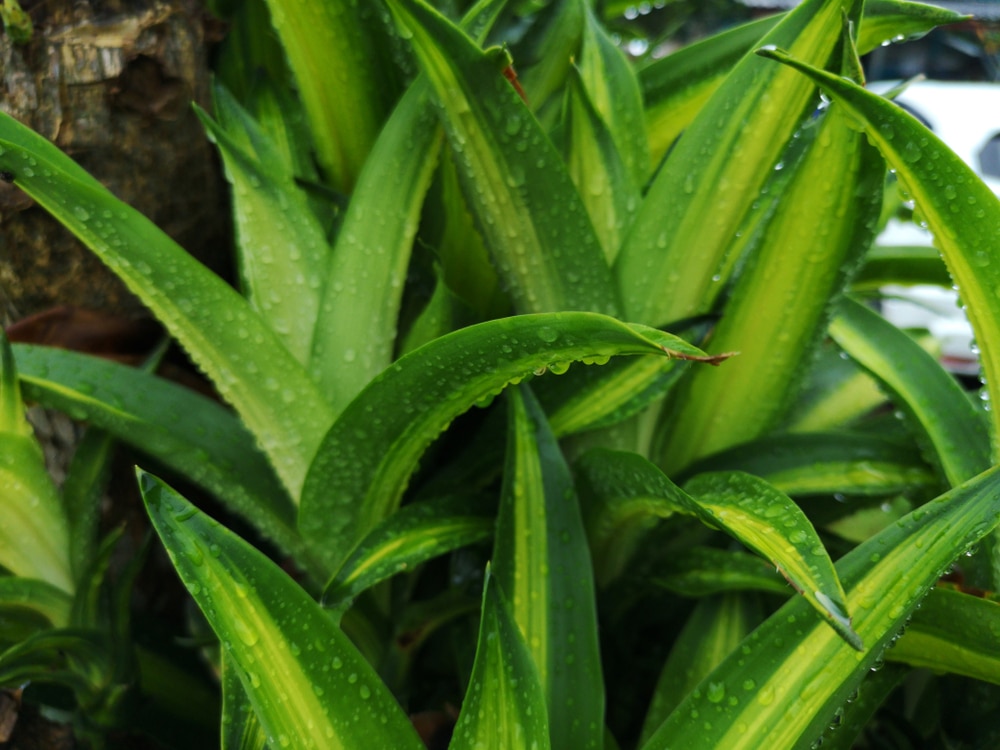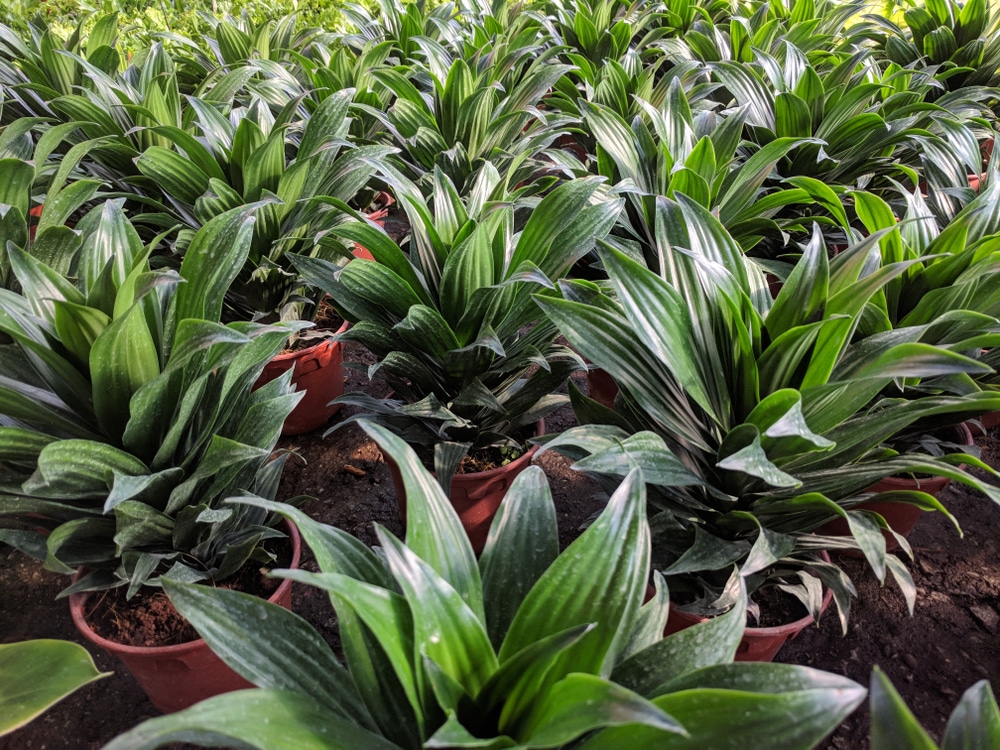A staple office plant of the 90s, the Dracaena Janet Craig is still a popular choice for adding some greenery indoors. With its lush and shiny dark green leaves, it’s easy to see why. But many people don’t realize that Janet Craig is relatively easy to care for, making it an excellent choice for anyone, whether you’re a plant pro or a total novice.
| Botanical Name | Dracaena deremensis |
| Common Name | Corn plant, Janet Craig Dracaena, Janet Craig, Warneckii Dracaena, Marnecki Dracaena |
| Plant Type | Evergreen, usually sold in nurseries as annual |
| Flower Color | White, yellow, pink, |
| Size When Mature | 24 – 40 inches ideally, can grow up to 72 inches if not pruned regularly |
| Bloom Time | Late fall to early winter and late spring to early summer. |
| Sun Requirements | Partial shade |
| USDA Hardiness Zones | 10 – 11 |
| Soil PH Range | 6.0 – 6.5 |
| Soil Type | Well-drained, loose soil |
| Water Needs | Medium |
| Native Area | Africa |
What you Need to Know About Dracaena Janet Craig
The Dracaena Janet Craig (Dracaena deremensis ‘Janet Craig’) is a popular variety of dracaena grown indoors. Aside from its stunning foliage, the plant can also produce a flower spike with clusters of small, fragrant flowers that are usually white or pale in color. Flowers are likely to occur only after the plant is mature.
Dracaenas are a type of evergreen that is widely grown for its ornamental value. When cared for properly, these plants can produce beautiful clusters of flowers.
However, blooming is not always easy to achieve, and it often requires plenty of sunlight, well-draining soil, and patience on the part of the grower.
Dracaenas kept indoors are especially unpredictable when it comes to blooming, as they may not reach maturity for several years. Nevertheless, the wait is often worth it, as a blooming dracaena can add a touch of beauty to any home. With a little care and attention, anyone can enjoy the beauty of these unique plants.
Janet Craig is also an excellent air purifier, removing benzene and formaldehyde from the air. Benzene is a known carcinogen, and formaldehyde is a respiratory irritant.
Both pollutants can be found in household cleaners, paint fumes, and tobacco smoke. By removing these pollutants from the air, Janet Craig helps to create a healthier indoor environment.
In addition, Janet Craig also helps to improve air quality by absorbing odors. Whether it’s the smell of cooking smoke or pet odor, Janet Craig can help to make your home smell fresher and cleaner.
However, it is essential to note that this plant is toxic to pets if ingested, so it’s best to keep it out of reach of furry friends.
How to Care for Dracaena Janet Craig
Here’s everything you need to know about growing and caring for a thriving Dracaena Janet Craig.
Light
This plant does best in bright, indirect light. Too much direct sunlight can scorch the leaves, so it’s best to err on the side of too little sun rather than too much.
If your plant looks pale or has yellowing leaves, likely, it’s not getting enough light. Move it to a brighter spot. Conversely, if the leaves look scorched or brown, they get too much light and should be moved to a shadier spot.
Water and Soil Needs
The Janet Craig is quite tolerant regarding water, but be sure to allow the soil to dry out between waterings. Overwatering is the most common cause of problems with this plant.
The best way to water your Janet Craig is to stick your finger into the potting mix and only water if it feels dry. If you’re unsure, it’s always better to wait a few days and check again.
When it comes to soil, Janet Craig prefers a well-draining potting mix. You can purchase a special potting mix or make your own by mixing equal parts of peat moss and vermiculite. Either way, ensure that the pot you use has drainage holes to allow excess water to escape. Also, it is best to avoid using perlite as a build of fluoride will make your leaf tips turn brown.
Temperature Requirements
This plant prefers room temperatures between 65 and 75 degrees Fahrenheit, making it a perfect plant for the home or office. Avoid drafts from windows or doors, as this can cause the leaves to brown.
If kept below 70 degrees Fahrenheit for an extended period, the growth of your Janet Craig will slow. If you notice that your plant is not growing as quickly as it should be, check the temperature of the room it is in and make adjustments accordingly.
Fertilizer
The Janet Craig is a slow-growing plant, so it doesn’t need a lot of fertilizer. Once every two to three months during the spring and summer is sufficient. Avoid using fertilizers with superphosphate, as this can also cause leaf tips to turn brown.
Common Diseases
Janet Craig is relatively resistant to disease and pests, but there are a few things to watch out for.
Leaf spot is a common disease that can affect Janet Craig. It is caused by a fungus and manifests as brown or black spots on the leaves. The best way to prevent leaf spots is to water early in the day, so the leaves have time to dry before nightfall.
Dracaena Janet Craig Propagation
Stem cuttings can propagate the Janet Craig. To propagate by stem cuttings:
- Cut a 4-inch piece from the tip of a healthy stem.
- Remove the lower leaves and dip the cut end into the rooting hormone.
- Plant the cutting in moist potting mix and place it in a warm, bright spot.
- Keep the soil moist but not soggy; in a few weeks, you should see roots forming. Once the roots have grown, you can transplant the cutting into its pot.
Related Article: Spiked Dracaena Care


